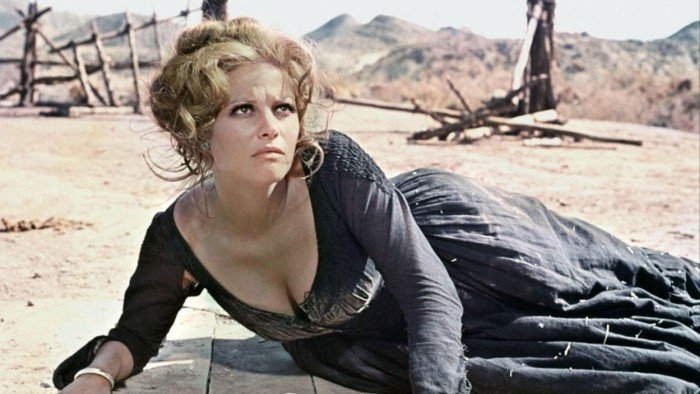Unlock the Editor’s Digest for free
Roula Khalaf, Editor of the FT, selects her favourite stories in this weekly newsletter.
In his celebrated novel The Leopard, Giuseppe Tomasi di Lampedusa describes the arriviste Angelica Sedara as “emanating from her whole person the invincible calm of a woman sure of her own beauty”.
The same could be said of Claudia Cardinale, who played Angelica in the 1963 masterpiece film adaptation and has died aged 87. Scouted at a beauty pageant in her hometown Tunis, in Cardinale’s six-decade career she won over audiences with layered performances and apparent vulnerability.
“What initially drew directors to her was her voluptuousness in her youth but what they quickly discovered was the intelligence and nuance that lay behind that beauty,” said Joshua Siegal, curator of the film department at New York’s MoMA.
 Alain Delon and Claudia Cardinale in a ballroom scene from Luchino Visconti’s 1963 film ‘The Leopard’ © Keystone/Hulton Archive/Getty Images
Alain Delon and Claudia Cardinale in a ballroom scene from Luchino Visconti’s 1963 film ‘The Leopard’ © Keystone/Hulton Archive/Getty Images
Born in 1938 to Sicilian immigrants in the French protectorate of Tunisia, Claude Josephine Rose Cardinale was raised speaking French, Arabic and her parents’ dialect.
In 1957, she was crowned “the most beautiful Italian girl in Tunis” at a pageant that was part of the film industry’s hunt for new faces. At the Venice film festival, she paraded at the Lido in an emerald green bikini before the paparazzi, and auditioned for Rome’s national film school.
She also met powerful film producer Franco Cristaldi; 14 years her senior, he became the dominant figure in her early professional and personal life. A seven-year, Hollywood-style contract allowed him to micromanage her career.
During the 1960s and 70s, Cardinale worked with the most famous directors of Italy’s golden age of cinema: Federico Fellini, Luchino Visconti, Sergio Leone. She embodied the elegance and glamour of the time but continued acting until the last years of life.
“She was the quintessential Mediterranean actress,” said Antonio Monda, professor of film at New York University. “It’s an incredible, fascinating mixture of beauty and lightness — with pain.”
Underpinning Cardinale’s performances were hidden personal traumas: a sexual assault as a teenager and what she later called an “abusive relationship” with an older man leading to an early pregnancy. In 1958, then 20, she secretly gave birth to a son. Cristaldi advised her to conceal the birth, fearing a scandal. Patrick was raised by her parents and initially passed off as a younger brother to avoid damaging her nascent career.
Though Cardinale was deliberately evasive about the details of this dark chapter of her life, she later told interviewers that her drive as an actress was initially fuelled by it. “If I started working early, it’s because of him [Patrick] — to make myself independent,” she said in 2018. “I didn’t want to be an actress. It was an accident.”
 Cardinale on the set of the 1967 film ‘To Hell With Heroes’. The actress came to symbolise modern Italian women in a man’s world © UPI/Bettmann Archive/Getty Images
Cardinale on the set of the 1967 film ‘To Hell With Heroes’. The actress came to symbolise modern Italian women in a man’s world © UPI/Bettmann Archive/Getty Images
Yet Cardinale came to symbolise modern Italian women in a man’s world. The characters she played “pursued their own path,” said Fabio Melelli, a biographer. “Even in her private life, she made courageous choices as an independent, strong woman, choices that were often not convenient.”
She first caught attention with a cameo in Mario Monicelli’s 1958 crime caper, Big Deal on Madonna Street, and other parts followed. Initially, her voice was dubbed. The depth of her talent was clear in 1963 with the release of two major films: The Leopard, from the perfectionist Visconti; and 8 1/2, directed by Fellini, who shot without a script, relied on improvisation and used Cardinale’s own voice for the first time.
“It’s not beauty that creates such an enduring career,” said Siegal, but the “ability to shape her performances to the wishes of the filmmakers that she worked with.”
Her first Hollywood film, The Pink Panther, followed, prompting co-star David Niven to say she was Italy’s best creation since spaghetti. She had a short stint in Hollywood, starring in Leone’s 1968 Once Upon a Time in the West.
Eventually, Cardinale’s relationship with Cristaldi soured; she later complained he treated her “as an employee”. In 1975, she became involved with the radical film director Pasquale Squitieri, who she called “the man of my life”, and they had a daughter.
 Cardinale is photographed during her book presentation in Madrid in 2009 © Pierre-Philippe Marcou/AFP/Getty Images
Cardinale is photographed during her book presentation in Madrid in 2009 © Pierre-Philippe Marcou/AFP/Getty Images
Her relationship with such an outsider in the cosy Rome film industry affected her career. She veered towards more unconventional films, including Werner Herzog’s Fitzcarraldo. Playing Mussolini’s mistress Clara Petacci, in Squitieri’s 1984 film Claretta, was a controversial step.
At the Cannes film festival in 2017, Cardinale advised that an actress needs “great inner strength” in order to “become someone else in front of the camera and then go back to being themselves”.

